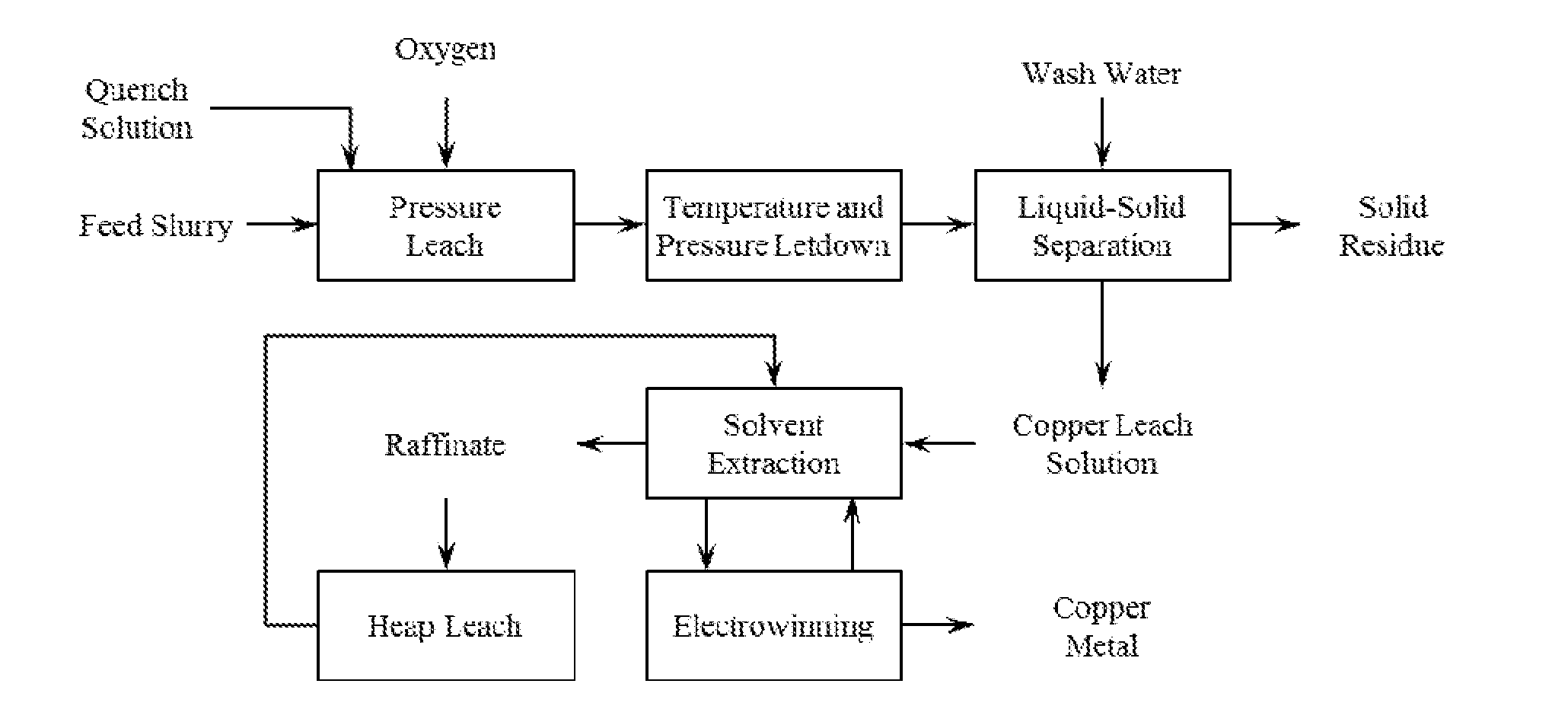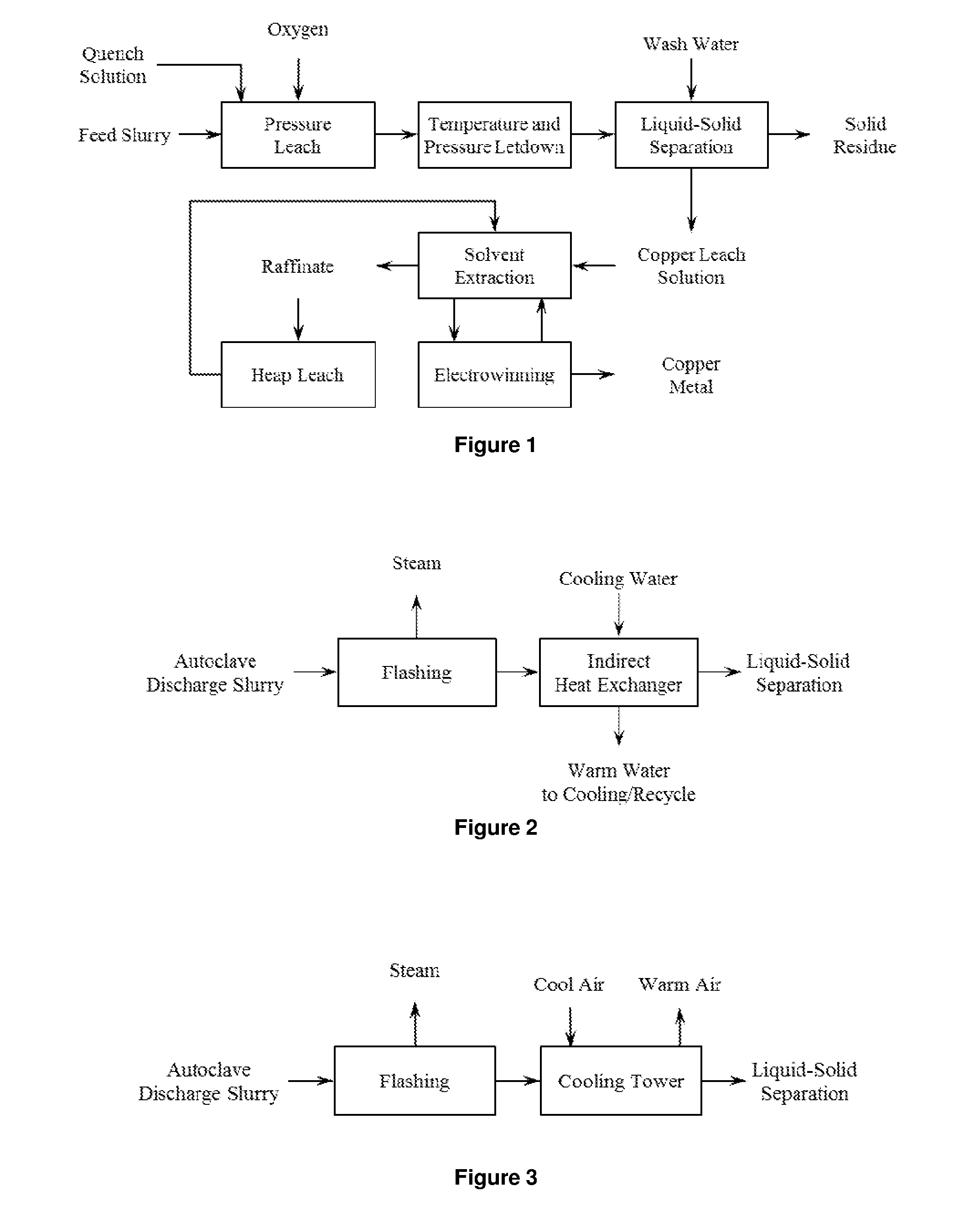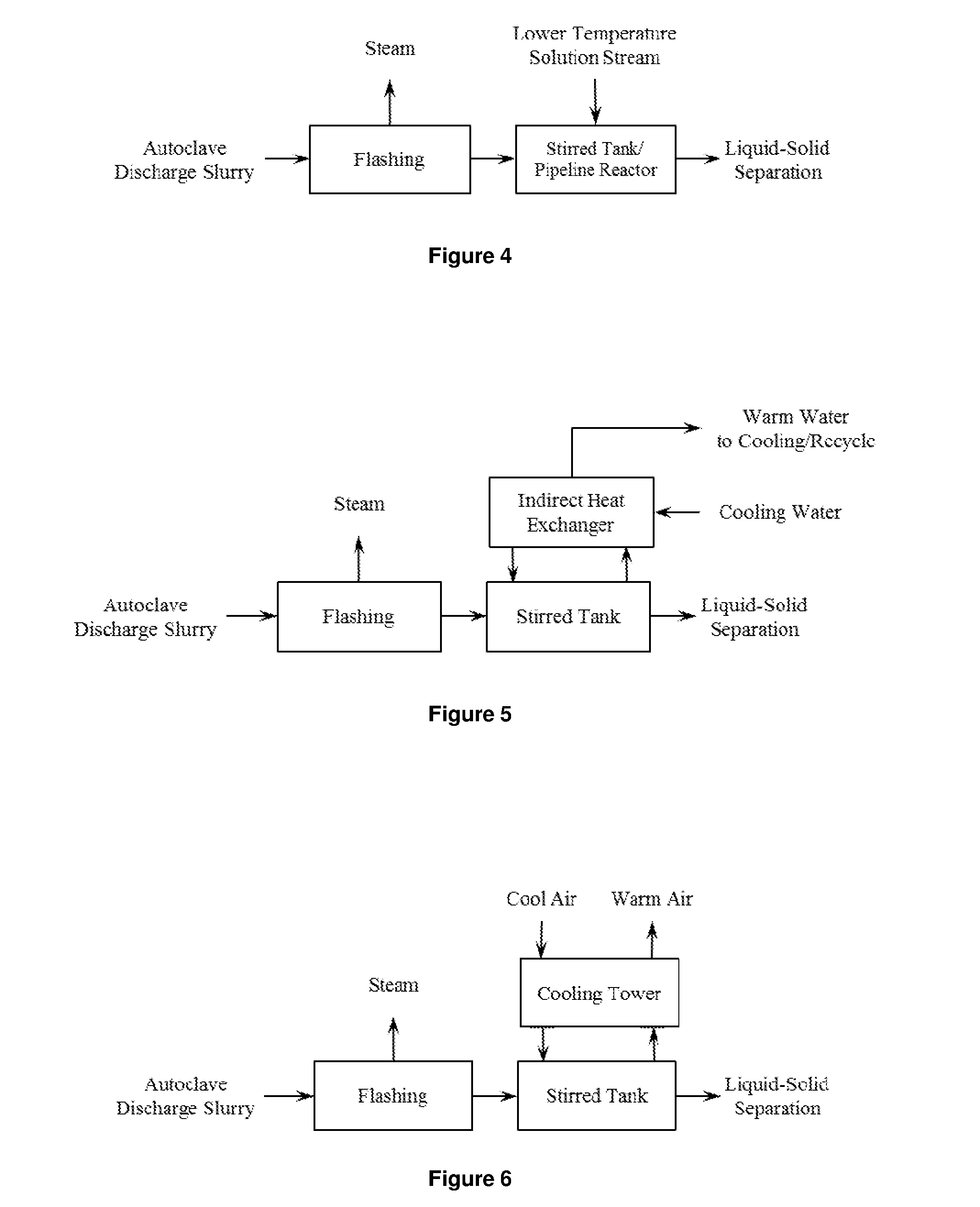Recovery of Copper from Arsenic-Containing Process Feed
a technology of arsenic-containing process feed and copper, which is applied in the direction of process efficiency improvement, optics, instruments, etc., can solve the problems of sulphate associated with other metal ions, sulphate produced by free acid, and inability to meet the requirements of environmental protection,
- Summary
- Abstract
- Description
- Claims
- Application Information
AI Technical Summary
Problems solved by technology
Method used
Image
Examples
example 1
[0136]Batch testing was performed with a process feed made up of different weight ratios of the following feed materials, including the following:
[0137]Concentrate 1 containing 32% Cu, 5.6% As, 15% Fe and 30% S
[0138]Concentrate 2 containing 26% Cu, 1.1% As, 24% Fe and 35% S
[0139]Roaster Dust, from treatment of copper concentrates, containing 22% Cu, 8.3% As, 10% Fe and 5% S.
[0140]The above materials, with the exception of the roaster dust, were also used as the process feed for pilot plant testing in a multiple compartment horizontal autoclave with continuous feeding of the autoclave and withdrawal of the autoclave discharge slurry. In addition, in some of the batch and continuous testing, arsenic bearing solutions (6 to 14 g / L As, 0.3 to 0.6 g / L Cu, 0.1 to 1.0 g / L Fe, 17 to 22 g / L H2SO4) were added as a portion of the quench solution.
[0141]In these tests, the Fe:As molar ratio in the combined process feed (i.e., calculated based on the total of the process feed and the quench solut...
example 2
[0147]A series of batch pressure oxidation tests were conducted with a process feed containing 32% Cu, 5.6% As, 15% Fe and 30% S (Fe:As molar ratio of 3.9:1) at 220° C. and 500 kPa oxygen pressure. Process water, containing 0.05 g / L Ca, 0.9 g / L Na, 0.09 g / L K and 1.5 g / L Cl, was added to simulate the addition of quench solution in a commercial autoclave. The Fe:As molar ratio in the combined process feed was 3.9:1.
[0148]After 60 minutes, the autoclave discharge slurry samples were rapidly cooled and filtered, with the solids washed. The solids were then recombined with the filtrate, either as discharged from the autoclave or after neutralization to lower the acid concentration before being reacted in a stirred vessel at 50, 70 or 95° C. for 6 hours.
[0149]FIGS. 20-22 show the concentrations of arsenic in solution with reaction time at the temperatures tested. These figures demonstrate that high temperatures, high acidity and longer reaction times promote the re-dissolution of arsenic...
example 3
[0152]Continuous pilot plant testing was performed with a process feed containing 32% Cu, 5.6% As, 15% Fe and 30% S, with quench solution containing 16% as an arsenic bearing solution (14 g / L As, 0.3 g / L Cu, 22 g / L H2SO4) and the remaining quench solution as process water, containing 0.05 g / L Ca, 0.9 g / L Na, 0.09 g / L K and 1.5 g / L Cl. The Fe:As molar ratio in the combined process feed was 2.8:1. The leaching conditions were 220° C. and 500 kPa oxygen pressure with a retention time of 60 minutes.
[0153]A sample of the autoclave discharge slurry was cooled rapidly to 50° C. and then filtered, with the solids washed. The solids were then recombined with the filtrate, either as-discharged from the autoclave or after neutralization to lower the acid concentration before being reacted in a stirred vessel at 50, 75 or 95° C. for 12 hours. FIG. 24 shows the increase of arsenic in solution with time for the three temperatures tested. The solids residues also showed greater environmental stabi...
PUM
| Property | Measurement | Unit |
|---|---|---|
| partial pressure | aaaaa | aaaaa |
| temperature | aaaaa | aaaaa |
| temperature | aaaaa | aaaaa |
Abstract
Description
Claims
Application Information
 Login to view more
Login to view more - R&D Engineer
- R&D Manager
- IP Professional
- Industry Leading Data Capabilities
- Powerful AI technology
- Patent DNA Extraction
Browse by: Latest US Patents, China's latest patents, Technical Efficacy Thesaurus, Application Domain, Technology Topic.
© 2024 PatSnap. All rights reserved.Legal|Privacy policy|Modern Slavery Act Transparency Statement|Sitemap



